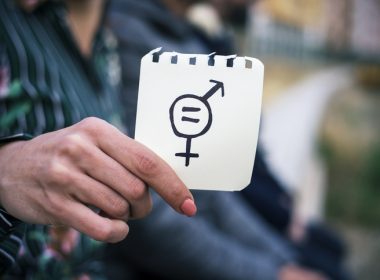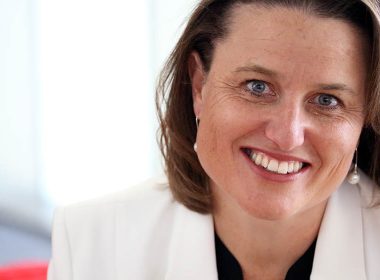More law firms are making diversity and inclusion a priority, but success requires establishing a business case, a considered approach, and strong leadership.
Calls for greater diversity have long been heard in politics, business and – particularly of late – the entertainment industry. But it’s not just the corridors of power, wealth and Hollywood being forced to confront the challenge of adapting to the changing face of society. The legal profession also has to play catch up.
In Australia, many law firms are ramping up efforts to bring their workplaces into the 21st century by rolling out diversity and inclusion initiatives targeted not just at women, but also people of colour, Indigenous Australians, and LGBTQI+ people.
What do the numbers say?
The need for diversity initiatives in the profession is clear. Although more than 50 per cent of Australian practising solicitors are women, according to the Law Society of NSW’s most recent audit of solicitor numbers across Australia, published in the 2017 report on the National Profile of the Profession, there remains a stark lack of female representation at the top of law firms.
The National Profile report found that just 13 per cent of female lawyers are principal solicitors in a legal practice, while the average income of female practitioners is still around 10 per cent lower than the average.
Some legal operators are making strides on gender equality. Earlier this year, the federal government’s Workplace Gender Equality Agency (WGEA) recognised a record 20 legal bodies as gender equality employers of choice, up from 17 firms the year before. Cooper Grace Ward Lawyers, Hall & Wilcox, and Sparke Helmore Lawyers were the new players added to the WGEA list, joining the likes of Baker McKenzie, Clayton Utz, DLA Piper Australia and Gilbert +Tobin at the vanguard of gender equality in law.
By contrast, on cultural diversity, the legal profession appears to be lagging further behind.
That’s certainly the message from a recent landmark survey by 11 of Australia’s biggest law firms looking at the representation of lawyers from a cultural perspective.
The survey, which polled 5,000 staff from across Australia, found that while 20 per cent of non-partner lawyers and 25 per cent of law graduates were of an Asian background, just 8 per cent of partners were Asian.
The results on Indigenous representation were even more startling, with less than 1 per cent of those polled identifying as Aboriginal or Torres Strait Islander.
On the LGBTQI+ front, data on local diversity and inclusion in law remains scarce. However, if an industry survey conducted in partnership with Thomson Reuters in 2018 is anything to go by, more needs to be done there, too. That survey revealed that 44 per cent of respondents thought their employers needed to do more on LGBTQI+ diversity, and 66 per cent believed the profession as a whole needed to lift its game in the area. When it came to the need for LGBTQI+ inclusion measures at work, 56 per cent of those polled said such initiatives were either very important or important to them.
Diversity means a mind-shift
Against this backdrop, it can be tempting for firms to jump into diversity and inclusion without doing their due diligence, says Law Society Diversity and Inclusion Committee chairperson Juliana Warner.
Warner says that while it can seem easy to tinker around the edges on the issue, “you can’t just have a little push and think it’s all fixed”.
“There has to be a complete mind-shift about moving towards an environment where people can bring their whole selves to work, and where people can speak and express views and be listened to,” she says.
“We need to be tending to all the diverse people in our society and ensure they’re included and that they can come into the legal profession and succeed.
“The whole point is that it makes for an environment in which people want to be – and if they’re where they want to be, they’re more productive.”
For that to be achieved, says Warner, firms need to focus on the end goal – a truly inclusive culture where people can bring their various perspectives to the table.
The business case for diversity
A critical plank in achieving meaningful change is making the “obvious” business case for diversity clear to those at the top of large, medium, and small firms. That’s something which, according to Herbert Smith Freehills’ Head of Diversity and Inclusion, Danielle Kelly, is becoming easier as firms reach a more culturally diverse client base.
“Clients have such a big role to play here,” says Kelly, pointing to the recent open letter from more than 170 general counsels to law firms pushing for greater diversity in corporate partnerships and signed by reps from the likes of BHP, Heineken USA, Vox Media, Lyft and S&P Global Ratings.
“We received [the letter] a number of times. It’s just so powerful forwarding that statement to partners for whom the business case for diversity and inclusion may not be so obvious.
“If this becomes something that clients are focussed on, then everyone focusses on it.”
Those pushing the business case have research on their side. For instance, one study published in Human Resources Management found diverse and inclusive work cultures increased staff retention, thereby reducing hiring costs. That’s because, according to researchers, employees who felt valued and respected by their organisation were more likely to remain in their role for longer.
What’s more, it found that workers were more likely to stay with a company where there was a proactive diversity climate, as it boosted the sense that the workplace was fair.
Even so, Maurice Blackburn employment principal Giri Sivaraman says there will always be some people who feel diversity and inclusion is “not a core business issue”.
“They feel people are not going to progress, not because of merit but because of some attribute they possess,” Sivaraman says.
There has to be a complete mind-shift about moving towards an environment where people can bring their whole selves to work, and where people can speak and express views and be listened to.
JULIANA WARNER,
Diversity and Inclusion Committee Chairperson, Law Society of NSW
Firms need diversity champions
In Sivaraman’s opinion, it’s important that those in senior positions lead by example. He points to Maurice Blackburn’s former chair, Steve Walsh, who championed the issue within the firm.
“We were very lucky in that Steve Walsh, who recently retired from the firm, was our champion during the time when there was a strong focus on improving cultural diversity, and diversity generally,” says Sivaraman, who is on the firm’s diversity and inclusivity committee.
“When you’ve got the most senior person in the organisation publicly and visibly championing the need to improve diversity, it makes an enormous difference.”
Keerthi Ravi and Kathryn Viegas from the group Diverse Women in Law also point to the importance of role models. For them, it’s critical that those setting the example also come from different cultural backgrounds.
The Sydney-based not-for-profit, which targets early-career lawyers from a broad range of cultures and backgrounds, nominates mentoring as a key offering.
“Our focus in working with young women is really premised on the idea of introducing role models and mentors early on in their careers,” Ravi explains.
“At the grassroots level, we’ve all identified a serious lack of mentorship and support and inclusiveness if you’re female and diverse.”
Viegas describes the group as all about ensuring diverse women lawyers “have a voice”, and views mentoring as an “excellent way” to achieve this goal.
“For diverse women, when you enter the profession it can be quite intimidating. You can feel quite isolated when you look around and you can’t identify with your colleagues,” she says.
“The fact of having a mentor who has similar experiences to you – not necessarily identical, but a sense of that shared journey through law – makes you feel secure that other people have taken the same path you have.”
Ravi agrees: “Law, in particular some areas of law, attracts a very type-A personality. From my own experience, and lots of the women I’ve spoken to, if you are a minority, you can feel like you don’t have that ability and that platform to say something – it represses your voice.”
While groups like Diverse Women in Law are linking young women with successful lawyers who come from similar backgrounds, James Morvell, Chair of Hall & Wilcox’s Diversity and Inclusion Committee, believes in getting diverse lawyers up the ladder.
Morvell says his firm has had a number of leaders who have “broken the bamboo ceiling”, which is something the organisation is keen to continue fostering.
“We want to build on their experiences and their position as role models to show what can happen,” he says.
“If I look at our organisational structure, our cultural diversity overall is reflective of the graduates coming through, (but) the thing we’re trying to improve is how to bring some of these talented professionals through for whom English may not be their first language, or they or their parents weren’t born in Australia.”
A helpful step, Morvell says, has been what he terms “blind recruitment”. Part of a Victorian Government project to develop inclusive recruitment practices and address unconscious bias, the process involves removing identifying elements from candidates’ applications.
“Many details are redacted, like gender, school and address, so for people who may have unintended bias, or some real bias, those factors are stripped out,” Morvell explains.
“I think that has made a real difference to the cohort we’re seeing coming into particularly entry level roles across the firm. It’s one of the things you look at and wonder, ‘Why haven’t we done this for the last 15 years?’”
Not just a big-end-of-town issue
While the big law firms get most of the recognition for their diversity and inclusion work, small firms and sole practitioners are also grappling with how to address the issue.
Nick Stevens, Director of Stevens & Associates Lawyers in Sydney, says small operators don’t have as much time and money to plough into it, but believes meaningful action can still take place.
The employment lawyer and sole practitioner says these days, when he looks at applications “it’s a real cultural mix,” says Stevens.
“It’s not just the Anglo or traditional Celtic-type names anymore”.
As a bulwark against any unconscious biases he may have in the hiring process, he makes sure he does all job interviews with a senior colleague. He also believes that many of the best practitioners in his field, employment law, come from a variety of cultures.
“Over the years there have been Australians of many different backgrounds who have been employed with me as senior and junior solicitors,” he says.
“Actions speak louder than words.”




